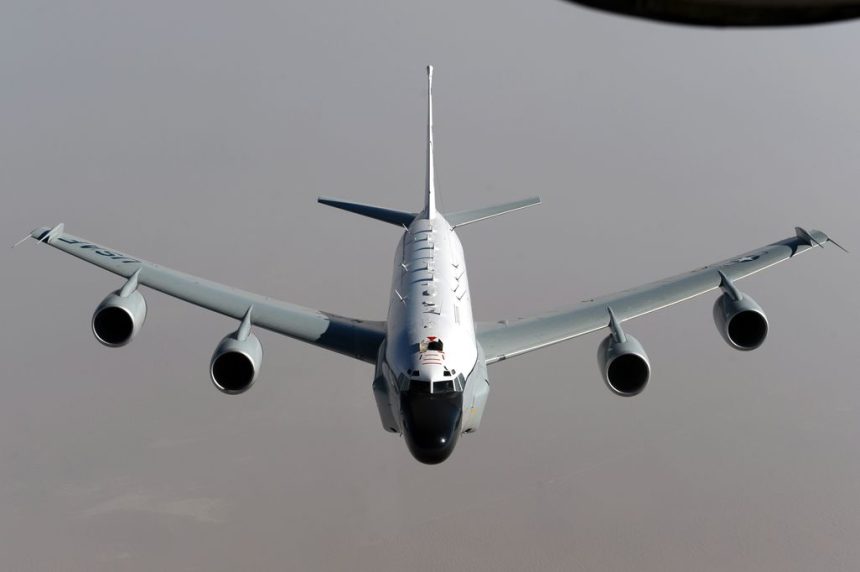According to the Russians, an American RC-135 flying close to Russia’s eastern border nearly collided with two civilian flights.
According to a statement from the Russian Ministry of Defense, a U.S. spyplane flying over the Sea of Japan, in international airspace, near Russia’s eastern border, was involved in two near collisions with passenger planes in a matter of a few hours.
According to the State-controlled media outlet Sputnik News and to the Interfax agency, Defense Ministry spokesman Major-General Igor Konashenkov acknowledged that American spy planes conduct flights along eastern Russia daily, but “this time, while maneuvering along the international air route, the US spy plane created a real threat of collision for passenger aircraft, which could lead to catastrophic consequences.”
The Russian spokesman criticized the American aircrew for their “unprofessional actions” that could lead to a disaster while the Russian Defense Ministry has summoned a US defense attaché calling for an immediate explanation of the incident.
The near-misses involved a Swiss and a KLM flights.
The first incident occurred as a U.S. RC-135 Rivet Joint, launched from Kadena Air Base, flying over the Sea of Japan at an altitude of 33,000 feet, switched off its transponder, becoming almost invisible to the civilian radars and flew directly into an international air route traversed by KLM Dutch Airlines and Swiss Airlines (Tokyo-Zurich).
At 5:41am local time, Russian radar controllers radioed “last-second commands to a Swiss Airlines passenger jet to lower their altitude to prevent a collision. The instructions, provided by the staff at the Valdivostok regional air traffic control center, came after the Swiss crew radioed that they had made a visual observation of a four-engine plane moving toward them.”
The second near-miss involved a Boeing 777 flying scheduled service Tokyo-Amsterdam that was instructed to change its route when an “unknown aircraft,” later identified as the same US RC-135 intelligence gathering plane, flew towards the Dutch airliner.
Russian Air traffic Control detected the spy plane on radar at an altitude of 36,000 feet: it was instructed to turn away but it failed to respond to the Russian controllers and to provide identification (according to Interfax). For this reason, the Boeing 777 was forced to descend some 1,600 feet (500 meters) to “narrowly avert collision.”
Although close encounters between U.S. and Russian spyplanes and interceptors occur quite regularly (featuring also some pretty aggressive maneuvers that always spark complains), near collisions between these ELINT (Electronic Intelligence) aircraft eavesdropping the enemy’s communications and emissions and civil jets are much rarer.
On Mar. 3, 2014, a SAS Boeing 737 was forced to perform an evasive maneuver to avoid a Russian Il-20 Coot intelligence gathering aircraft off Sweden.
Spyplanes operate in “due regard,” with transponder switched off, with no radio comms with the ATC control, using the concept of “see and avoid” where the pilot flying is responsible for avoiding all traffic conflicts, much like a VFR flight plan without flight following.
Although they should avoid interfering with civil traffic they sometimes fly dangerously close to some busy airways, causing some concern.
The Pentagon has recently protested for the “reckless” and “unprofessional” behaviour of the Russian pilot who buzzed the RC-135s and flew dangerously close to the American aircraft in the Baltics.
This time it’s the turn of the Russian MoD to protest for “unprofessional actions”: another sign that nothing has changed; we live a second Cold War.















